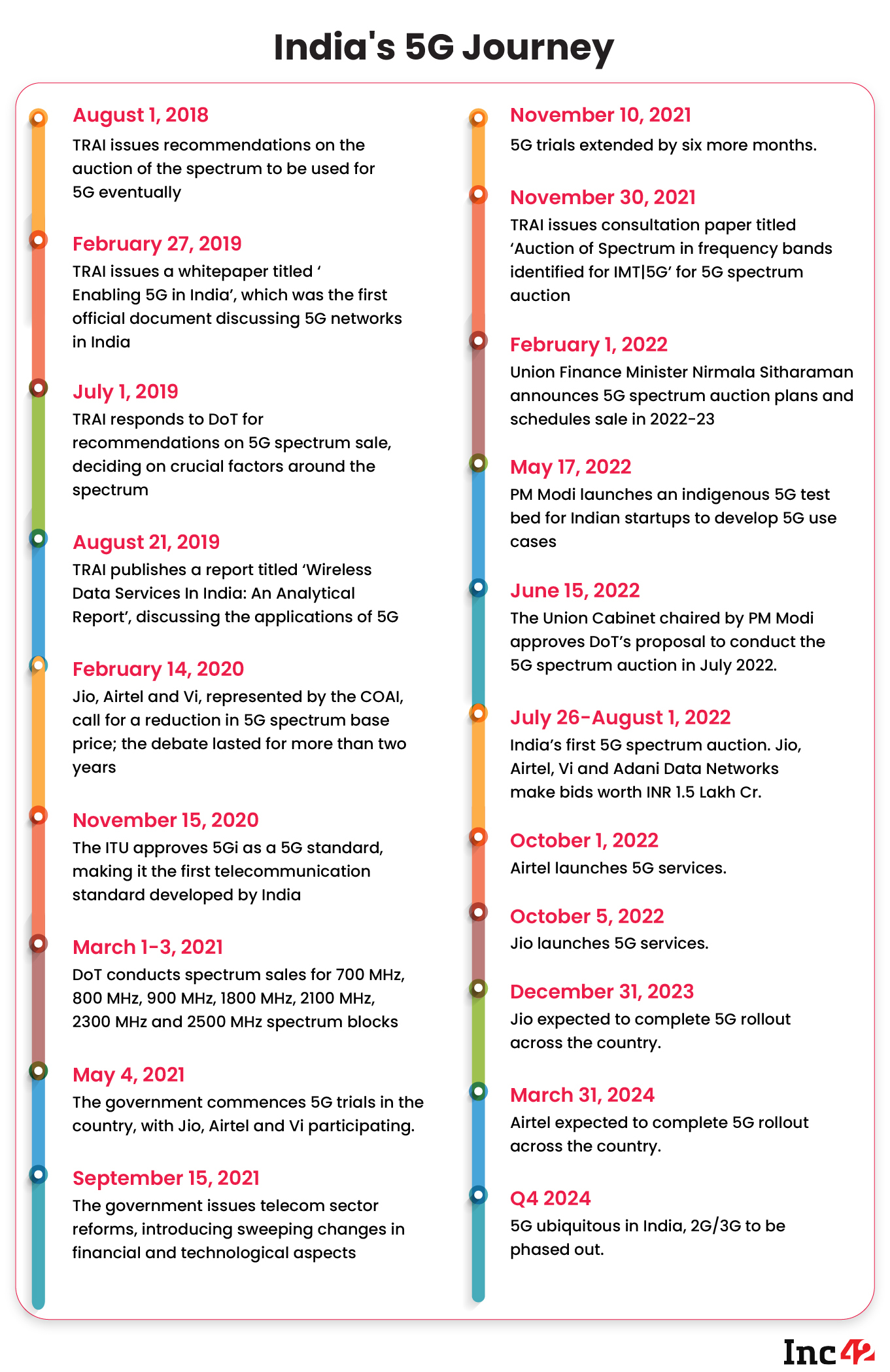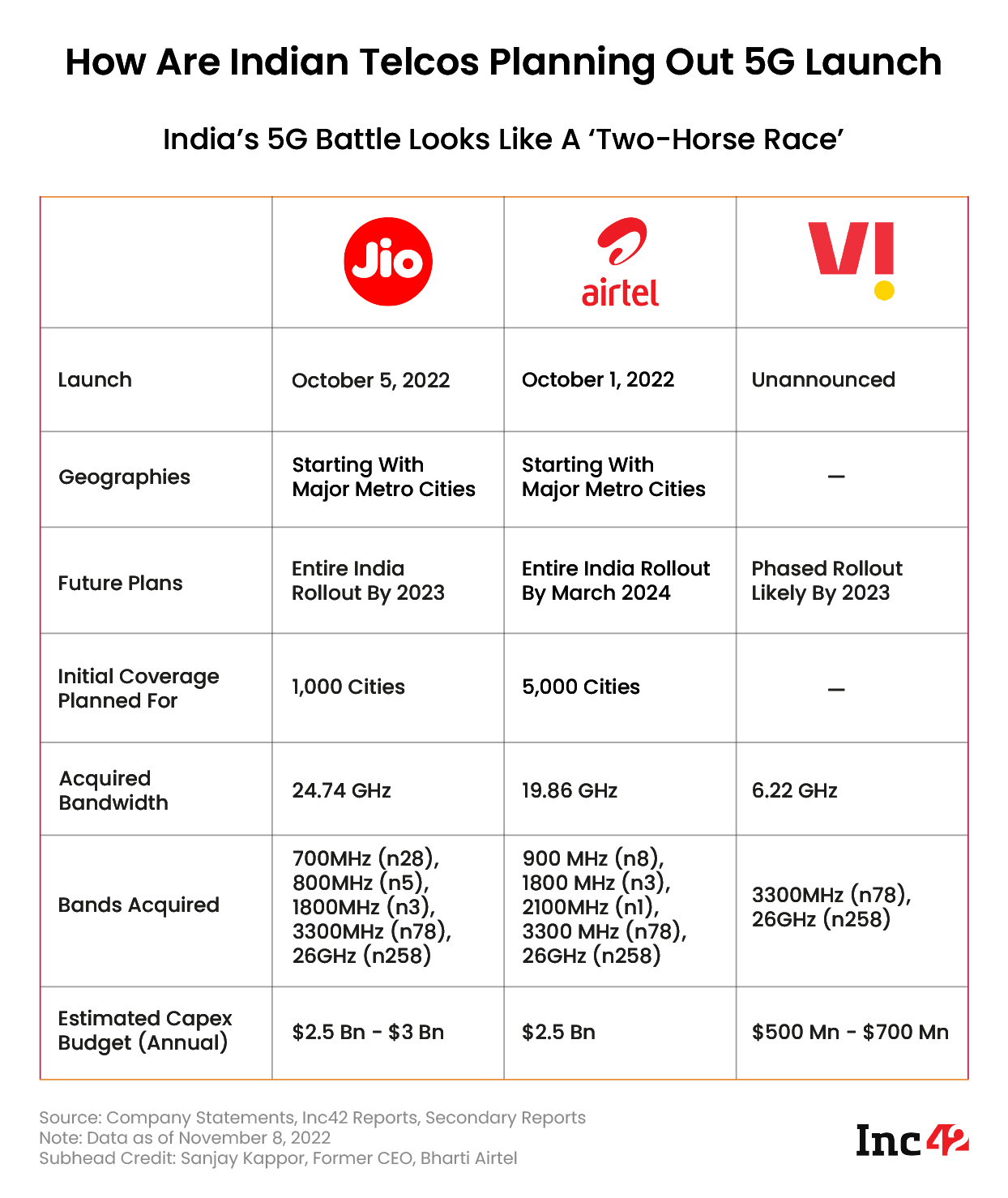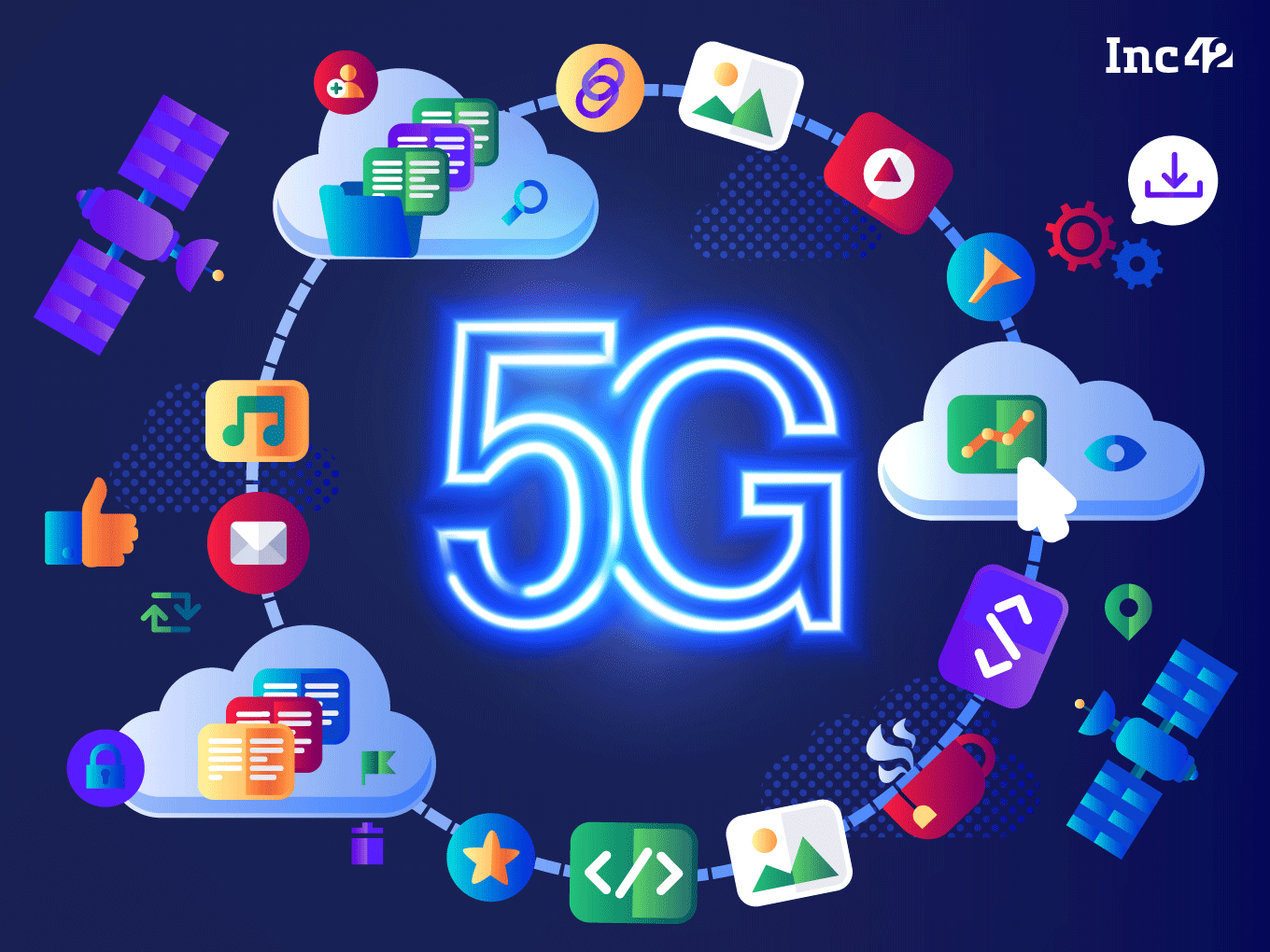SUMMARY
PM Narendra Modi launched the first commercial 5G network in the country on October 1, an event culminating years of efforts behind the scenes
India’s 5G journey started in August 2018, when TRAI issued recommendations on the auction of 5G spectrum bands
Airtel already claims to have a million 5G customers, while Jio is yet to reveal any numbers; 5G is expected to be ubiquitous in India by late 2024
Three years after the world saw the first 5G network, India has finally started its journey towards the next major upgrade in telecom networks.
Prime Minister Narendra Modi launched the first commercial 5G network in the country on October 1, an event culminating years of efforts behind the scenes. Since issuing recommendations around the spectrum in August 2018, India’s 5G journey has been a long one, but in many ways, it has only just started.
India’s three biggest telcos, Reliance Jio, Bharti Airtel and Vodafone Idea (Vi) have projected a timeline of no earlier than 2024 before the next-gen network becomes ubiquitous.

Airtel, Jio Lead 5G Race
Among the three private telcos in the country, Airtel and Jio have come out of the blocks strongly. Even so, the Sunil Mittal-led telco remains in the lead, having claimed the title of being the first telco to launch 5G services in India.

Jio was the most well-equipped to roll out a comprehensive 5G network at the start of August 2022. The question here is – How did Airtel pip Jio to the launch?
Without going into too much detail, Airtel has opted to launch its network using a technology called 5G non-standalone (NSA). In simple terms, 5G NSA uses a telco’s existing 4G core network to carry its 5G network.
This move allowed Airtel to gain the first-mover advantage. However, the technology comes at the cost of reduced network quality, speed and capacity as a 4G core can’t support 5G properly.
Jio, on the other hand, has developed an indigenous 5G core and has therefore launched its network using 5G standalone (SA) technology. The network speeds, capacity and quality of an SA network leave 5G NSA far behind.
Both Jio and Airtel have bought the right mix of the spectrum to enable 5G SA coverage. In due time, Airtel would also introduce a 5G core and launch the SA network.
Vodafone Idea (Vi), on the other hand, looks set to follow Airtel’s footsteps, though it lacks the amount of spectrum it needs to cover the entirety of India with 5G. The telco might look at technologies such as dynamic spectrum sharing (DSS) to cope.
According to Prabhu Ram, head of the industry intelligence group at CyberMedia Research, the competition between Airtel and Jio will lead to a swift rollout of 5G services in India. “Both (Jio and Airtel) have drawn up aggressive plans to steer 5G coverage and take a leadership mantle,” added Ram.
5G To Be Ubiquitous By Late 2024?
Airtel already claims to have a million 5G customers, while Jio is yet to reveal any numbers. Ram added that 5G will become ubiquitous in India by late 2024, driven by the intense competition between Jio and Airtel.
This is a date that the two telcos might agree upon. The Akash Ambani-led telco is looking to complete its rollout by December 2023, while the Sunil Mittal-led telco has set a target of around March 2024. Either way, the telcos should get a leeway of two to three quarters for the rollout considering the scale of the project.
The Cellular Operators Association of India (COAI), the industry body that represents all telcos, gear makers and other tech companies in India, remains optimistic about the 5G rollout across the country but also pointed out the challenges. It added that a slight delay might prove to be beneficial.
“A slight delay in India’s adoption of 5G may be a boon here, as we have the opportunity to learn from the experience of the global economies that have implemented 5G,” said Lt Gen Dr S P Kochhar, director general, COAI.
Several challenges still await telcos during their 5G rollout journey. Fiberisation and towerisation are critical aspects of a successful network rollout, according to the COAI.
“While the government has introduced amended Right of Way (RoW) guidelines to help facilitate faster deployments of telecom infrastructure across the states for establishing an efficient pan-India 5G network, the ground execution continues to face challenges in terms of implementation at different state and local authority levels,” said Kochhar.
The telecom body also called for the cooperation of state and local government bodies for providing telcos with the necessary RoW to install 5G equipment.
Overcoming these challenges might just prove tricky enough to delay the complete rollout by a few months, but that might not be relevant in the bigger picture.
The Present And Future Of 5G In India
The initial 5G experience in India has received a mixed response. According to Ookla, 5G networks in India have reached a median download speed of 500 Mbps.
From a neutral standpoint, that is impressive. In the context of 5G, which promises a theoretical speed limit of 20 Gbps, this is only 1/40th of the true extent.
While that might be a harsh comparison, and the rest of the world has faced similar teething problems, 5G has several mountains to climb (very literally in some places) in India to deliver on the promises. Ericsson claims that the 5G network performance will be a key factor to drive customer loyalty. Even from a business perspective, telcos need to up their 5G game.
Even though there is so much talk about 5G, India hasn’t yet managed to achieve 100% 4G ubiquity. On paper, all three telcos have 4G networks that cover more than 99% of the country’s territory.
However, 4G speeds in the country are far from the global average and merely a 1/20th of the theoretical limit of 150 Mbps. As such, the claims that 5G will be a hugely transformative technology should be taken with a pinch of salt.
In India, the scale has never been a problem for telecom operators. CyberMedia Research estimates that around 67 Mn 5G-capable smartphones have been shipped in India until September 2022. According to Ericsson, this number is already at 100 Mn.
From a startup standpoint, 5G is already bringing more growth opportunities and scale.
Ericsson noted that 60% of the 5G-ready users are using more than three digital services. With true 5G speeds, Indian users are set to use more digital services, boosting India’s app economy. Further, use cases such as healthtech, cloud gaming and edtech are set to receive an almighty boost as 5G becomes ubiquitous.
India’s digital economy was built on the foundations of 4G. The next generation of mobile networks is expected to provide further impetus and take the country’s digital economy beyond the $1 Tn mark.



























